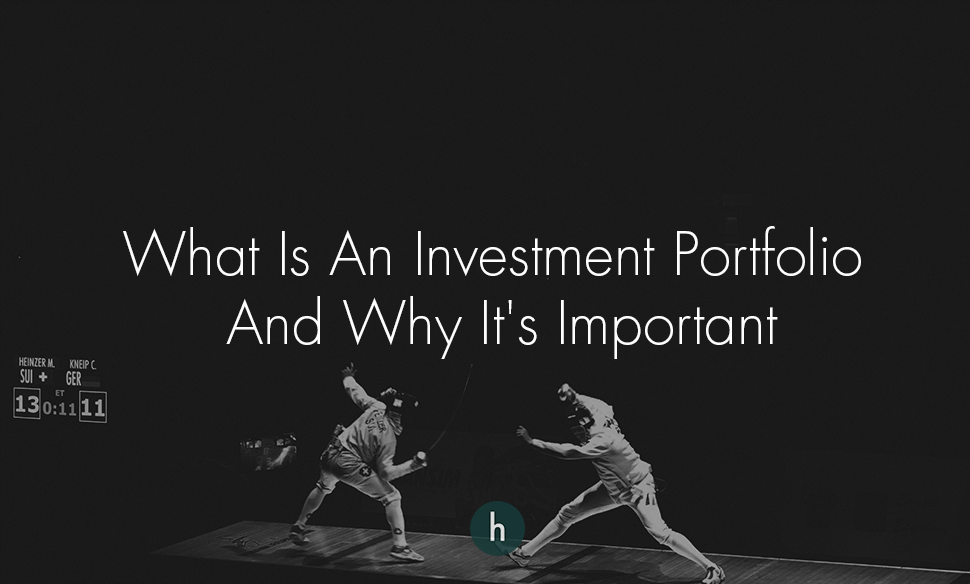Photo by Micaela Parente
A portfolio is a collection of like things. A photographer's portfolio is a compilation of photos they've taken. A graphic designer's portfolio is full of designs they've done from logos to brand identities, to websites, and illustrations. A portfolio is used to show the breadth and depth of whatever it is showcasing.
An investment portfolio is the entire collection of all your investments.
And just for good measure, let's review the definition of an investment. From a finance perspective, investments are monetary assets bought to produce income or make a profit by selling the asset in the future at a higher price.
There are disagreements about what should get included in an investment portfolio. Should a $17,500 Michael Jordan Basketball card and 1/5th of an inherited vacation house be included? Maybe. It depends on which advisor you ask. But, it's probably not a terrible idea to look at all your investments holistically.
To understand what your investment portfolio is, let's assume anything outside of a monetary asset bought explicitly as an investment will just be considered an asset or an alternative investment.
All of your investments lumped together is your investment portfolio
You can have an investment portfolio within your portfolio. It's like a folder within a folder on Dropbox.
For example, your entire investment portfolio holds your retirement portfolio. And within your retirement portfolio, are those accounts whose purpose is to help you achieve that elusive goal: retirement. You might have a 401(k) and an IRA (individual retirement account). And eventually, you might open up a brokerage account for additional retirement savings.
You hold investments in each account. It's generally possible to invest in any of the following: stocks, bonds, mutual funds, index funds, exchange-traded funds, options, and even cash. These different types of investments are known as asset classes.
Asset classes are groups of investments with similar characteristics
Think of it like surfboards. Asset classes might carry the same risk or perform a certain way, given market conditions, just like surfboards. Not only will the long board and the short board perform differently in different surf conditions, they are have different characteristics and cater to specific riders; just like asset classes.
Asset classes can further be subdivided. But that's a little advanced for this article.
Cool, cool, cool. So how do you choose how you should invest?
Investing is all about balancing risk. You determine the amount of risk you can take by understanding three critical things: time, tolerance, and types of investment.
Time
Your time horizon, or when you need the money, is a significant determinant of how much risk you can and should be taking. Here's a crude analogy. You have your rent money in your hand, and it's the 30th of the month. Since you need to pay your rent tomorrow, you obviously should not take any risk by investing it. On the contrary, if you have $500 a month that you'd like to save for retirement in 40 years, you have a long time to ride the ups and downs of the market. You have time to take risks. When you need the money helps determine how much risk you should take with it.
Tolerance
Ok, but what if you don’t need the money for a long time, like 12 years, but you hate risk? Your risk tolerance is how much risk you can personally stomach. How you invest your portfolio should also balance and consider your risk tolerance. When you invest your money with a financial institution, you will be required to complete a risk tolerance questionnaire. The questionnaire will help you determine how much risk you are comfortable taking.
Types of Investment (Asset Allocation)
When you balance your time horizon, how much risk you can tolerate and the goal you’re trying to reach (example goal: grow your money by 9% over 10 years) you invest your portfolio in an “asset allocation” that balances all of those things.
Diversification
But you also want to make sure that you aren’t taking on anymore risk by having a lopsided asset allocation. Having a diversified asset allocation is a way of spreading out your risk and not having all your eggs in one basket. General financial wisdom says you want to make sure you aren't at risk of losing too much at any given time and having a diversified asset allocation is a way of doing that.
Imagine you are a farmer. You subsist entirely off of your harvest. Anything you eat, you had to have farmed. You would probably want to have a diversified asset allocation of crops. Diversifying your plants isn't just to alleviate the boredom of eating corn every day. Having all of the same vegetables is risky. A parasite or fungus or shift in weather expectations could wipe it all out in one fell swoop. A variety of crops that react uniquely to different conditions helps reduce the risk that one variable will leave you starving.
You can build your portfolio yourself or go with a “ready-made” solution
I would recommend reading a few investing books if you're going to go that route. It's your financial future; you don't want to go into it completely ignorant.
However, there are more "ready-made" solutions out there. Any robo advisors will help you balance risk within an account, across all these areas: time, tolerance, and types of investment. It should be easy to make changes and to see how those changes impact the risk you're taking in that particular account. If you can't, then you're flying blind and you should consider a platform with better technology.
Hey, remember - markets are unpredictable and all of this is totally made up. The best you can do is learn the principles so you can understand how your actions and choices may impact your life and society at large. Try to understand differing opinions, it’s the best way to challenge your assumptions and shape your perspective. May you be prosperous.




